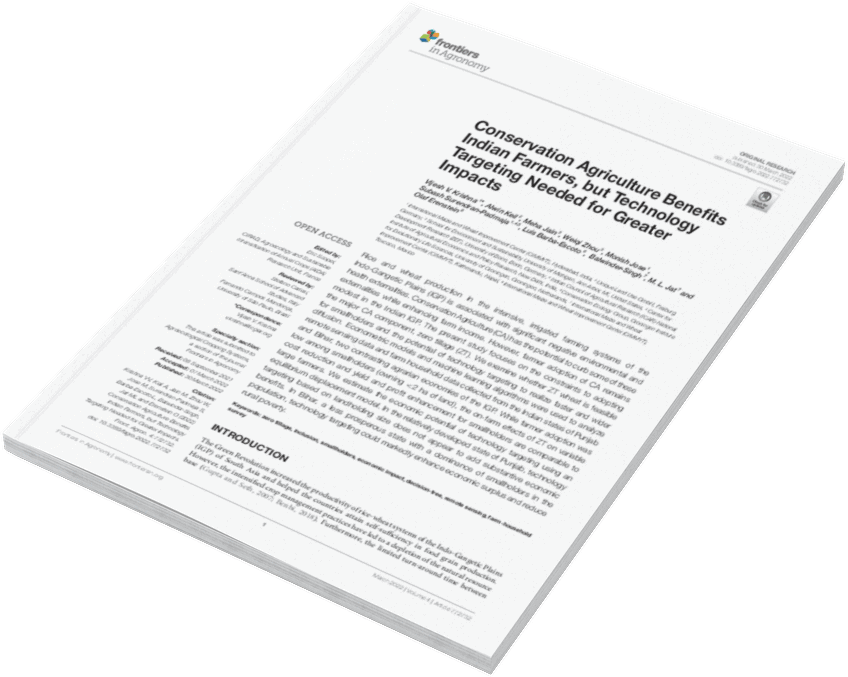Vijesh V. Krishna, Alwin Keil, Meha Jain, Weiqi Zhou, Monish Jose, Subash Surendran-Padmaja, Luis Barba-Escoto, Balwinder-Singh, M. L. Jat and Olaf Erenstein
Rice and wheat production in the intensive, irrigated farming systems of the Indo-Gangetic Plains (IGP) is associated with significant negative environmental and health externalities. Conservation Agriculture (CA) has the potential to curb some of these externalities while enhancing farm income. However, farmer adoption of CA remains modest in the Indian IGP. The present study focuses on the constraints to adopting the major CA component, zero tillage (ZT). We examine whether ZT wheat is feasible for smallholders and the potential of technology targeting to realize faster and wider diffusion. Econometric models and machine learning algorithms were used to analyze remote sensing data and farm household data collected from the Indian states of Punjab and Bihar, two contrasting agrarian economies of the IGP. While farmer adoption was low among smallholders (owning <2 ha of land), the on-farm effects of ZT on variable cost reduction and yield and profit enhancement for smallholders are comparable to large farmers. We estimate the economic potential of technology targeting using an equilibrium displacement model. In the relatively developed state of Punjab, technology targeting based on landholding size does not appear to add substantive economic benefits. In Bihar, a less prosperous state with a dominance of smallholders in the population, technology targeting could markedly enhance economic surplus and reduce rural poverty.
